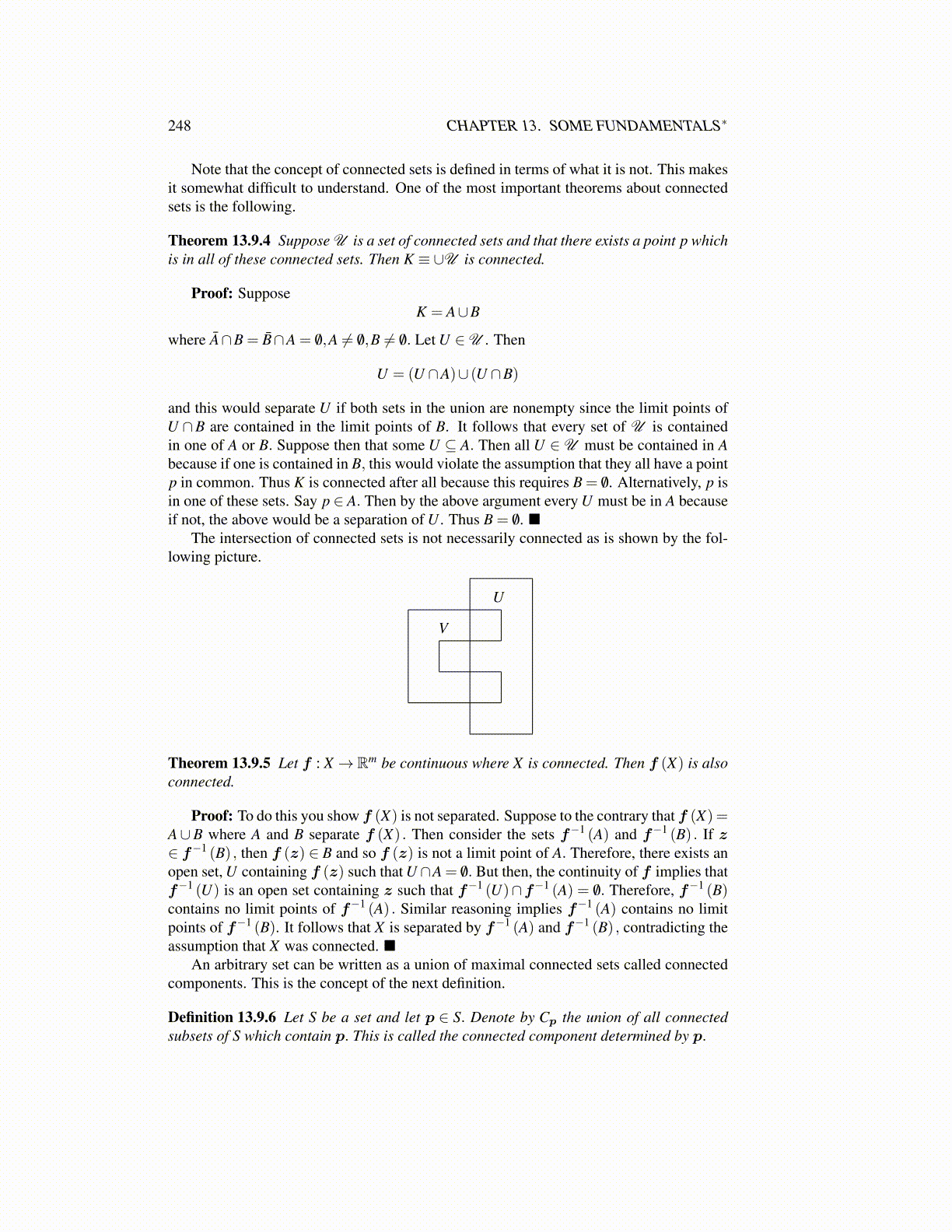
248 CHAPTER 13. SOME FUNDAMENTALS∗
Note that the concept of connected sets is defined in terms of what it is not. This makesit somewhat difficult to understand. One of the most important theorems about connectedsets is the following.
Theorem 13.9.4 Suppose U is a set of connected sets and that there exists a point p whichis in all of these connected sets. Then K ≡ ∪U is connected.
Proof: SupposeK = A∪B
where Ā∩B = B̄∩A = /0,A ̸= /0,B ̸= /0. Let U ∈U . Then
U = (U ∩A)∪ (U ∩B)
and this would separate U if both sets in the union are nonempty since the limit points ofU ∩B are contained in the limit points of B. It follows that every set of U is containedin one of A or B. Suppose then that some U ⊆ A. Then all U ∈U must be contained in Abecause if one is contained in B, this would violate the assumption that they all have a pointp in common. Thus K is connected after all because this requires B = /0. Alternatively, p isin one of these sets. Say p ∈ A. Then by the above argument every U must be in A becauseif not, the above would be a separation of U . Thus B = /0. ■
The intersection of connected sets is not necessarily connected as is shown by the fol-lowing picture.
U
V
Theorem 13.9.5 Let f : X → Rm be continuous where X is connected. Then f (X) is alsoconnected.
Proof: To do this you show f (X) is not separated. Suppose to the contrary that f (X)=A∪B where A and B separate f (X) . Then consider the sets f−1 (A) and f−1 (B) . If z∈ f−1 (B) , then f (z) ∈ B and so f (z) is not a limit point of A. Therefore, there exists anopen set, U containing f (z) such that U ∩A = /0. But then, the continuity of f implies thatf−1 (U) is an open set containing z such that f−1 (U)∩f−1 (A) = /0. Therefore, f−1 (B)contains no limit points of f−1 (A) . Similar reasoning implies f−1 (A) contains no limitpoints of f−1 (B). It follows that X is separated by f−1 (A) and f−1 (B) , contradicting theassumption that X was connected. ■
An arbitrary set can be written as a union of maximal connected sets called connectedcomponents. This is the concept of the next definition.
Definition 13.9.6 Let S be a set and let p ∈ S. Denote by Cp the union of all connectedsubsets of S which contain p. This is called the connected component determined by p.